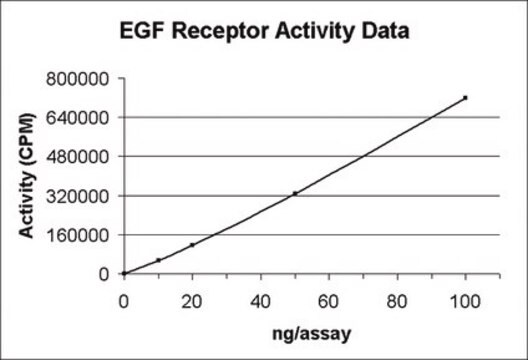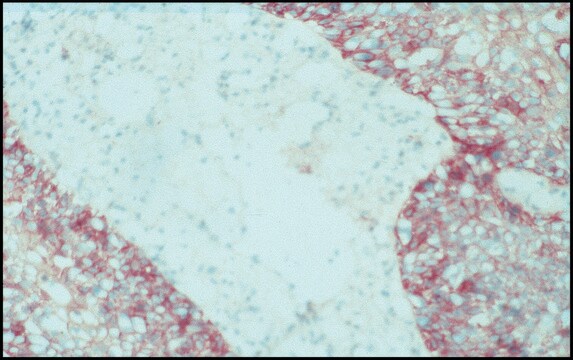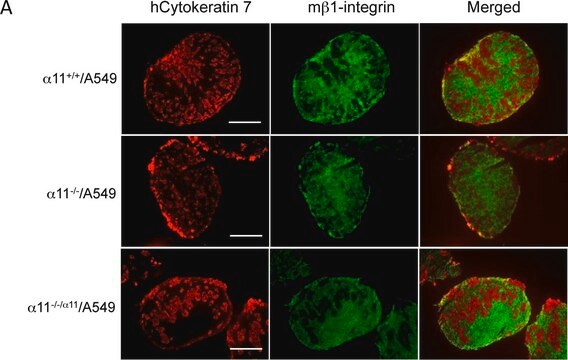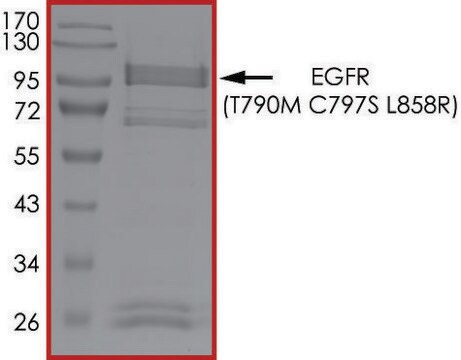SRP0239
EGFR Active human
recombinant, expressed in baculovirus infected insect cells, ≥70% (SDS-PAGE)
Synonym(s):
ERBB1, Epidermal growth factor receptor, HER1, PIG61, Proto-oncogene c-ErbB-1
About This Item
Recommended Products
biological source
human
recombinant
expressed in baculovirus infected insect cells
Assay
≥70% (SDS-PAGE)
form
aqueous solution
potency
≥0.14 units/mg
mol wt
87.3 kDa
packaging
pkg of 10 μg
concentration
>0.02 mg/mL
NCBI accession no.
UniProt accession no.
shipped in
dry ice
storage temp.
−70°C
Gene Information
human ... EGFR(1956)
General description
Application
- photo-cross-linking assays
- StavroX cross-linking site identification
- in vitro kinase assay
Biochem/physiol Actions
Unit Definition
Physical form
Preparation Note
Storage Class Code
10 - Combustible liquids
WGK
WGK 1
Flash Point(F)
Not applicable
Flash Point(C)
Not applicable
Certificates of Analysis (COA)
Search for Certificates of Analysis (COA) by entering the products Lot/Batch Number. Lot and Batch Numbers can be found on a product’s label following the words ‘Lot’ or ‘Batch’.
Already Own This Product?
Find documentation for the products that you have recently purchased in the Document Library.
Our team of scientists has experience in all areas of research including Life Science, Material Science, Chemical Synthesis, Chromatography, Analytical and many others.
Contact Technical Service





